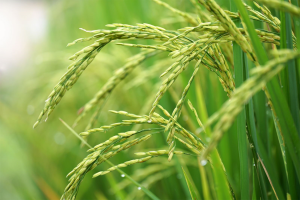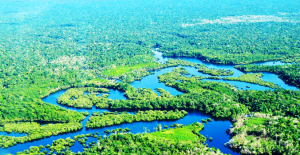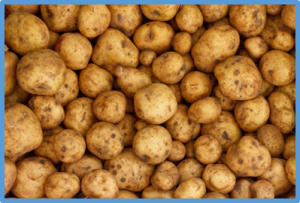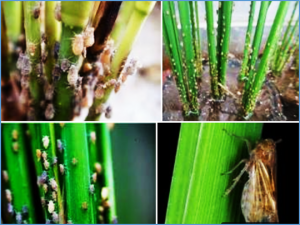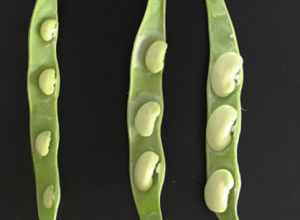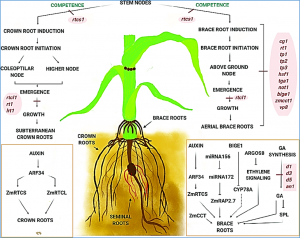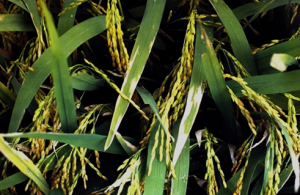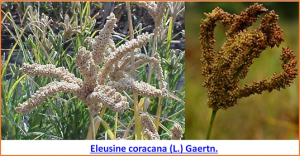Salinity stress is an environmental constraint that normally develops concurrently under field conditions, resulting in drastic limitation of rice plant growth and grain productivity. The objective of this study was to explore the alleviating effects of NaCl pre-treatment on rice seedlings as well as the salt tolerance mechanisms by evaluating morph-physiological traits.
Dynamic ecosystems, such as the Amazon forest, are expected to show critical slowing down behavior, or slower recovery from recurrent small perturbations, as they approach an ecological threshold to a different ecosystem state. Drought occurrences are becoming more prevalent across the Amazon, with known negative effects on forest health and functioning, but their actual role in the critical slowing down patterns still remains elusive.
Yellow Stem Borer (YSB), Scirpophaga incertulas (Walker) (Lepidoptera: Crambidae), is a major pest of rice, that can lead to 20–60% loss in rice production. Effective management of YSB infestation is challenged by the non-availability of adequate sources of resistance and poor understanding of resistance mechanisms, thus necessitating studies for generating resources to breed YSB resistant rice and to understand rice-YSB interaction
Barley is considered one of the most naturally resilient crops making it an excellent candidate to dissect the genetics of drought adaptive component traits. Stay-green, is thought to contribute to drought adaptation, in which the photosynthetic machinery is maintained for a longer period post-anthesis increasing the photosynthetic duration of the plant. In other cereal crops, including wheat, stay-green has been linked to increased yield under water-limited conditions.
Candidatus Liberibacter solanacearum (CLso) is a phloem-limited, fastidious bacterium associated with the potato (Solanum tuberosum) zebra chip disease. It is transmitted by the potato psyllid (Bactericera cockerelli Šulc.) and causes significant economic losses globally (Mora et al., 2021). Developing disease resistance by conventional breeding has shown limited success (Mora et al., 2022), thus necessitating new genetic engineering or genome editing approaches.
The brown planthopper (BPH) is the most destructive insect pest that threatens rice production globally. Developing rice varieties incorporating BPH-resistant genes has proven to be an effective control measure against BPH. In this study, we assessed the resistance of a core collection consisting of 502 rice germplasms by evaluating resistance scores, weight gain rates and honeydew excretions. A total of 117 rice varieties (23.31%) exhibited resistance to BPH. Genome-wide association studies (GWAS) were performed on both the entire panel of 502 rice varieties and its subspecies, and 6 loci were significantly associated with resistance scores (P value < 1.0e-8).
Common beans show wide seed variations in shape, size, water uptake, and coat proportion. This study aimed to identify consistent genomic regions and candidate genes involved in the genetic control of seed traits by combining association and differential expression analyses. In total, 298 lines from the Spanish Diversity Panel were genotyped with 4,658 SNP and phenotyped for seven seed traits in three seasons. Thirty-eight significant SNP-trait associations were detected, which were grouped into 23 QTL genomic regions with 1,605 predicted genes.
Plant root systems play a pivotal role in plant physiology and exhibit diverse phenotypic traits. Understanding the genetic mechanisms governing root growth and development in model plants like maize is crucial for enhancing crop resilience to drought and nutrient limitations. This study focused on identifying and characterizing ZmPILS6, an annotated auxin efflux carrier, as a key regulator of various crown root traits in maize.
In this study, we compared the APA profile of leaf blight-susceptible varieties (CT 9737-613P-M) and resistant varieties (NSIC RC154) following bacterial blight infection. Through gene enrichment analysis, we found that the genes of two varieties typically exhibited distal poly(A) (PA) sites that play different roles in two kinds of rice, indicating differential APA regulatory mechanisms
Climate change and population growth pose challenges to food security. Major crops such as maize, wheat, and rice are expected to face yield reductions due to warming in the coming years, highlighting the need for incorporating climate-resilient crops in agricultural production systems. Finger millet (Eleusine coracana (L.) Gaertn) is a nutritious cereal crop adapted to arid regions that could serve as an alternative crop for sustaining the food supply in low rainfall environments where other crops routinely fail.


 Curently online :
Curently online :
 Total visitors :
Total visitors :
